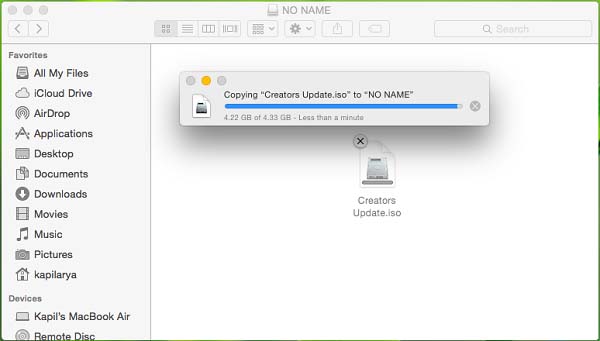
- #How to format 128gb usb from fat32 mac for large files how to
- #How to format 128gb usb from fat32 mac for large files code
- #How to format 128gb usb from fat32 mac for large files Pc
- #How to format 128gb usb from fat32 mac for large files windows
#How to format 128gb usb from fat32 mac for large files windows
Windows PowerShell is designed especially for the system administrators. NET frameworkand it includes a command-line shell and a scripting language. Windows PowerShell is a powerful tool that is developed by Microsoft for purposes of task automation and configuration management.

Boot from it and you’ll be able to copy from a HFS+ drive to a FAT/exFAT/NTFS drive. Keep a copy of live Ubuntu or some such on another USB drive. Tip: Linux is very handy for handling multiple file system formats.
#How to format 128gb usb from fat32 mac for large files Pc
Sadly for PC users, said knowledge is only employed on the Xbox to read from iPhones and iPads.
#How to format 128gb usb from fat32 mac for large files how to
Linux reads USB drives formatted in HFS+ and believe it or not, Microsoft actually knows how to as well. If you’re going to use your USB drive only on Macs, you can format it in HFS+. Just in case you’re not Windows-only, there are other options. Much faster writing of small files and folders to an Sandisk Extreme 900 formatted to NTFS. Slow writing of small files to a Sandisk Extreme 900 formatted in exFAT. The drive will still be readable on Macs and readable/writable using Linux. Back up the data on the drive, re-format said drive to NTFS, transfer the data back, and watch those files go. Most vendors chose the former.Īpparently, “It’s slow sometimes” generates far fewer support calls than “My drive doesn’t work!” The solution for Windows-only users is simple. The rock and the hard place Vendors faced a quandary: Format drives in the nearly universal FAT32/exFAT and let Windows users live with reduced performance when copying large numbers of small files or format them in NTFS for better performance under Windows-but in effect, render them write-protected on Macs and unreadable on other devices. Difficult as in terminal, command line, SUDO. Apple eventually added NTFS write support as well, but here’s the thing: It was hidden, disabled it by default and difficult to turn on. It took longer, but eventually the Linux community felt comfortable enough with its NTFS write-code that it was added to the operating system kernel. Samsung’s T1 and T3 external SSDs are very fast writers, but not nearly as fast with small files if you format them in exFAT rather than NTFS.
#How to format 128gb usb from fat32 mac for large files code
If your code screws up writing to a drive, you may have ruined someone’s digital life. Reading from NTFS within other operating systems soon became possible, but reading is non-destructive, so if you mess up with the code, you still have the original file. Regardless of the why, denying access to that code was like waving a red flag in the face of open-source programmers worldwide. It’s almost like they were in some sort of competition with other companies. A little history Microsoft wasn’t feeling particularly generous when it came up with its second-generation file system, so the company didn’t tell anyone else how to implement it. And at least part of the reason NTFS was developed is that the FAT family are very slow when writing large numbers of smaller files. But Windows largely relies on the NTFS file system these days you say. If you want to write small files quickly, format with NTFS. If you want maximum read/write compatibility, format with exFAT. That includes, but is not limited to: Windows PCs, cell phones, car radios, Linux, and OS X/iOS devices. USB drive vendors tend to format their drives at the factory with FAT32/exFAT because every device that can read USB mass storage can read and write to these well-known formats.

Why is your USB drive so slow? If your drive is formatted in FAT32 or exFAT (the latter of which can handle larger capacity drives), you have your answer. On Windows 7, click Computer on the right side of the Start window. A computer monitor-shaped icon will appear at the top of the Start window.

Do so either by clicking the Windows logo in the bottom-left corner of the screen, or by pressing the ⊞ Win key.Step 3, Type 'this pc' into Start. To do so, plug it into one of your PC's USB ports, which resemble thin, rectangular slots on your computer's housing.Step 2, Open Start. Step 1, Connect the USB flash drive to your computer.


 0 kommentar(er)
0 kommentar(er)
